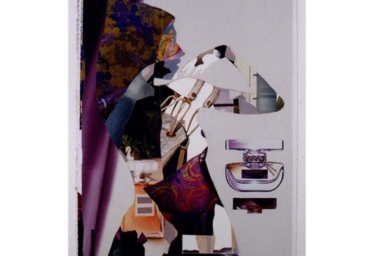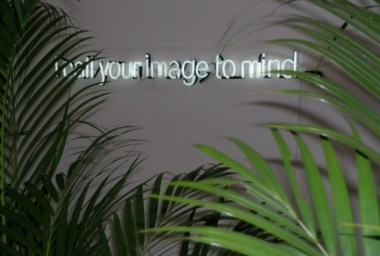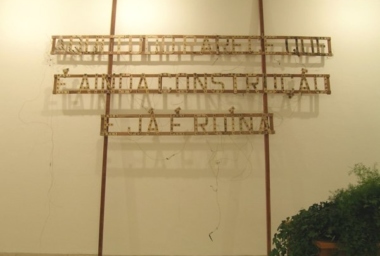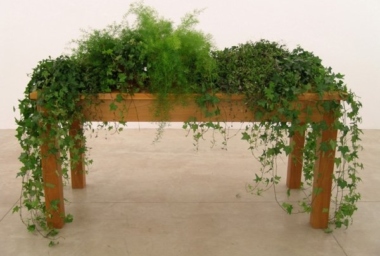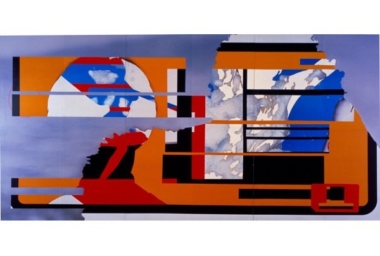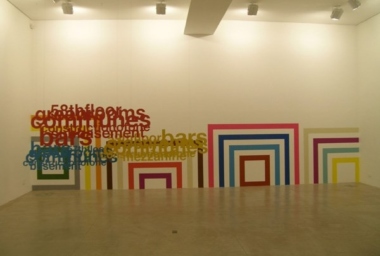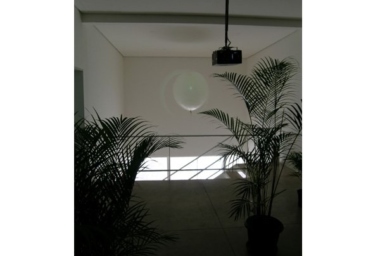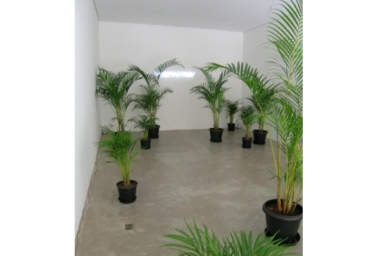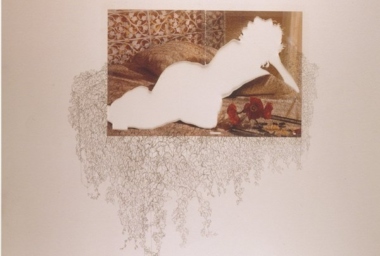Drunkenmasters
Jun 4 – Jul 3, 2004
Galeria Fortes Vilaça
Angus Fairhurst | Liam Gillick | Cerith Wyn Evans
Galeria Fortes Vilaça is pleased to inaugurate the exhibition drunkenmasters, which brings together three influential names in contemporary British art: Angus Fairhurst, Cerith Wyn Evans, and Liam Gillick. The show integrates painting, collage, sculpture, installation, and a happening.
It was the young São Paulo artist Tiago Carneiro da Cunha who gave the show its name-the three artists were his tutors at Goldsmiths College in London-borrowing from the world of martial arts the term drunkenmasters, a reference to a type of kung fu in which the fighter makes "drunken" movements in order to confuse and disarm his adversary. In spite of the decadence and glamour implied by the term, here it refers to the zigzag that these artists have created in the trajectory of their careers, resorting to practices external to the visual arts (music, literature, film) in shaping the body of their work. The construction of polyphonic meanings is at the core of these artists' production, which makes the audience abandon familiar ways to enter a labyrinth of references and unexpected places.
More often seen in biennials than in the scandalous group shows of New British Art, these three artists produce British art with less sensationalism and of the highest quality. Masters of the intellectual thought behind the noise of their colleagues' production, they differ in a long history of influences and collaborations. Wyn Evans worked with the film director Derek Jarman and choreographer Michael Clark, and participated in films and photos of Sam Taylor-Wood. Gillick has an established reputation as a writer, an author of texts in which he elaborates on his own work, develops critical theories of various other artists, analyzes the ecosystems of art, and also publishes fiction. For years Fairhurst has collaborated intensely with Damien Hirst and Sarah Lucas, most recently in the exhibition In-a-Gadda-da-Vidda (In the Garden of Eden) in the Tate Britain. He has also formed a rock band with Wyn Evans years ago.
In Five Billboards, body and text removed, Fairhurst presents a collage the actual size of a billboard. By removing determining elements of the original advertising images-human figures and texts-Fairhurst opens new spaces on the plane, establishing new relations between consumer culture, geometry, sex, beauty, and painting. Fairhurst is also showing the sculpture Mnemonic Table, a wooden table that retains the memory of nature. From the table's interior, plants sprout.
Has the film already started?, by Cerith Wyn Evans, is an enigmatic high-tech installation that paradoxically suggests a solar eclipse in a placid and natural environment. The abstract image of a white circle over a black background is projected onto a suspended helium balloon, also white. A series of codes is in play here. The projected image is from the film L'Anti Concept, a classic of avant-garde European cinema of the 1950's. Wyn Evans has replaced the original sound track with his own composition, a kind of 50 minute sound diary that combines Art Blakey, the sound of birds, and an interview with the Belgian artist Marcel Broodhathers, who in his installations in the 1960's used the same palm trees that Wyn Evans inserts into his installation. Another work by this artist takes place outside the gallery. The verse Aqui tudo parece que é ainda construção e já é ruína ("Here everything seems still under construction and already in ruins") from the song Fora da Ordem ("Out of Order") by Caetano Veloso, will be written with fireworks. The ephemeral event will become a film and also a wooden sculpture, where the sentence will be legible even after being burned.
Liam Gillick is exhibiting a wall painting, a geometric composition of intense colors. Three sculptures of painted aluminum, suspended in the air, intertwine words such as Communes, Greenrooms, and Bars, and superimpose themselves on the painting. Gillick's work attempts to develop insight into the way in which materials, structures, and color affect the environment and create associations. These works function as architectonic and ideological systems, forming scenarios that make vast use of design to speak in an abstract manner of how forms and colors can forge a social or political organization, or even an economic reality.
This exhibition has received support from the British Council of Brazil.
